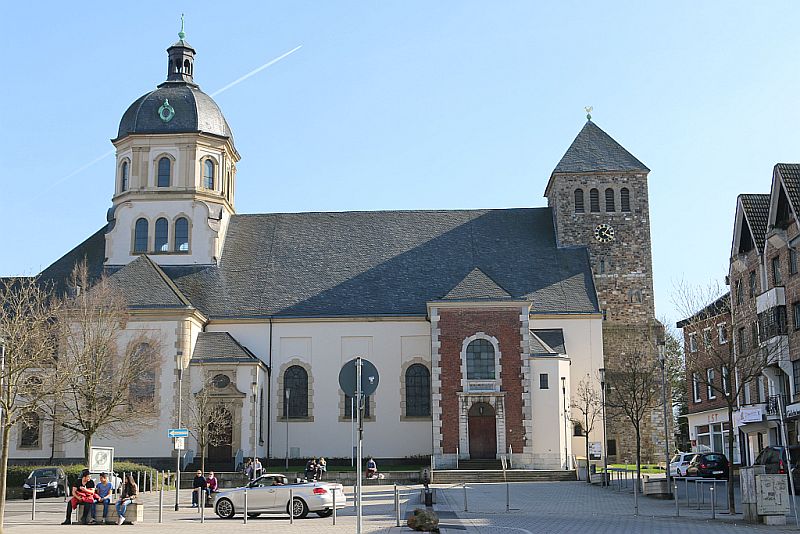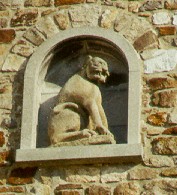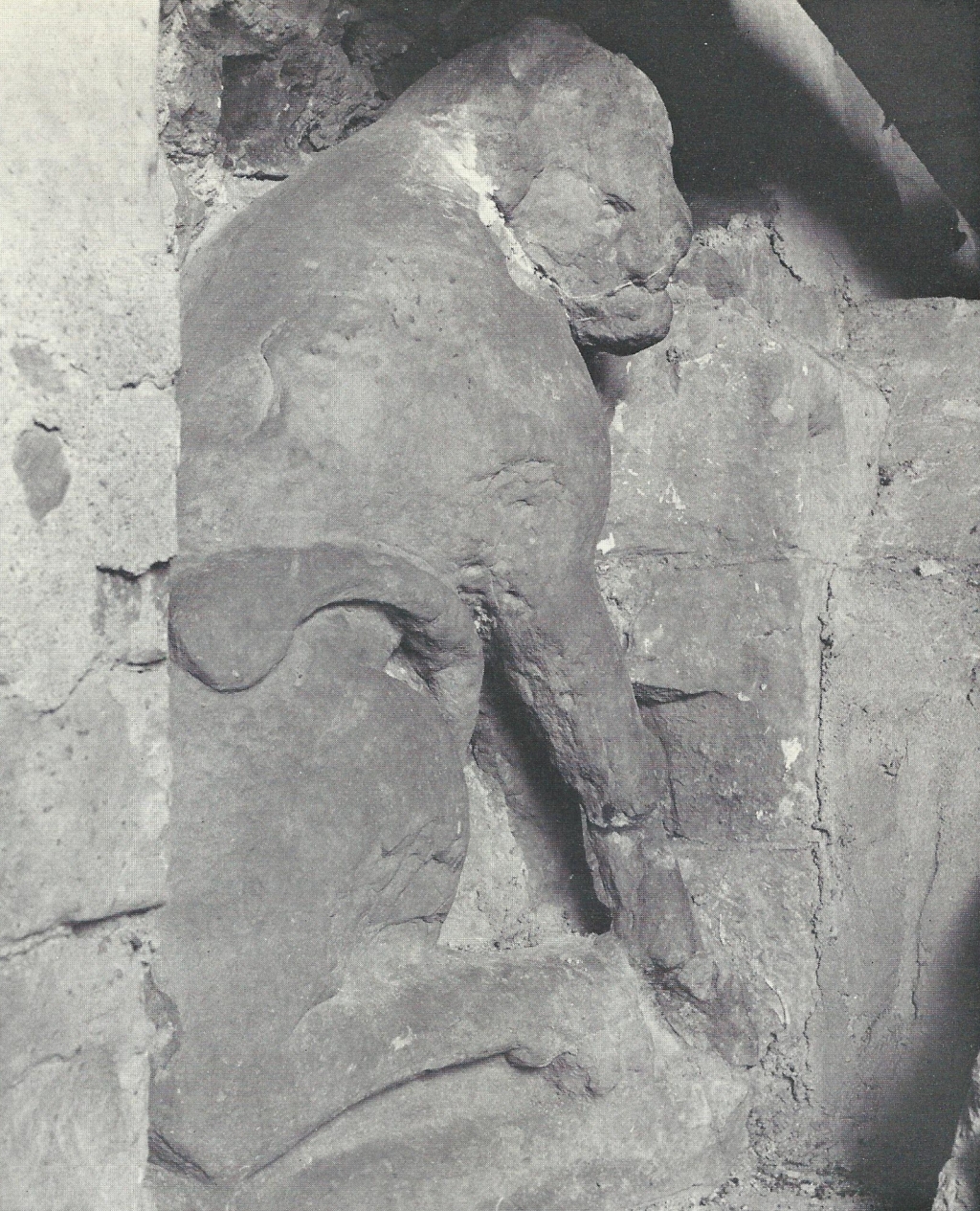Note webWürselen
'Düvel' is the word for 'devil' in the dialect spoken in Würselen. In plain German it is "Teufel". The 'Düvel' is a sculpture of the devil at the eastern tower of the church St. Sebastian. This is what people think. The following text which is a transcription from the relevant chapter in the book "Würselen - History Of A City" assumes a different view: It is a lion. And what you see at the tower is a copy.

Church St. Sebastian: The 'Düvel' is located at the tower on the right beneath the clock

The well-known 'Düvel' at the tower
Only a copy?
Any way, you need to know the 'Düvel' which is the town's landmark. Würselen is also called the "Düvelstadt", the 'Devil's City'. If the following treatise tells the truth, Würselen is the 'Lions's City' ... Enjoy the original text:
Original text continued ...
Whoever speaks of Würselen must also speak of the devil, or rather of the "Düvel." The Düvel is the hallmark of the Würselener, just as one distinguishes the Aachen at the "Klenkes" or at the "Blootwoesh" the Cologne from his neighbors.
If two from Würselen, who do not know each other, meet somewhere outside their hometown and then come out in conversation that both are from Würselen, the famous sentence is certainly dropped: "Bes de va Wöschele, da kenns de och dr Düvel!" For the uninitiated again: "Are you of Würselen, then you also know the devil."
Of course, the person addressed knows the Düvel or at least thinks he knows the stone figure high up at the tower of the parish church of St. Sebastian, the "cathedral" of Würselen. But who really knows what this Düvel is or means. One is clear, Würselen owes it the epithet "Düvelstadt".
One of the interpretations says: The Düvel is not a devil at all, but a lion. What is certain, in any case, is that the Düvel, which can be seen in a niche on the outside of the tower of the church and looks unaltered and threatening towards Aachen, is not the "original düvel." It is a replica, while the real, already badly weathered figure from the 11th or 12th century enjoys the protection of a tower niche under today's church roof.

'Düvel' - The original
Source: "Würselen - History Of A City"
© City of Würselen
Whoever ventures across the vault to it catches its sinister gaze out of the darkness, and so over the centuries the legend of the Düvel may have developed from a lion squatting grimly in the dark.
But how did the lion figure - if it's even a lion - get into its hiding place under the church roof? It can be assumed that in the stone church, built around the 12th century instead of the former wooden church, the church tower far overruled the roof of the three-nave longhouse. As with many Romanesque churches of the time, there were two lion figures on each side of the arch and niche-emblematic guardians and defenders of the church.
Later, when the church roof was pulled higher and structural changes were made to the tower, the lion figures disappeared. Only where under the church roof a piece of the original tower is still preserved on the side to the church, has one of the lions also retained its ancestral place in the niche, but now withdrawn from sight by the higher church roof. On the other hand, the replica on one of the outsides of the tower is visible, about at the same height, by the way, on which the real old Düvel also remains hidden in its hiding place on the concealed side of the tower.
Another explanation does not see the Düvel as a lion, but actually as a demon, as it was often banished in stone by the Romanesque church builders, in order to no longer be able to wreak havoc in the kingdom of God and the Church. In this case, the Düvel would have, in a certain sense, been given a task that is frequently cited to exorcise the devil through Beelzebub.
The parish church of St. Sebastian is at the beginning of the history of Würselen: It was this church that Ludwig the German entrusted to the Abbot Ansbold of Prüm with his document of 17 October 870. The gift certificate mentions the name Würselen for the first time — but in the form still common at the time as "Wormsalt."
Over the centuries, the Church has endured a spirited destiny. Almost decayed or completely destroyed several times, it was repeatedly built up in the same place and repeatedly enlarged. It was clearly felt that the market square, with the widening, basberic-like structure of the church, had become the actual center of Würselen with its numerous spatially spacing districts, and therefore did everything possible to create this center for the place. Get.
As probably most significant in the series of builders of this church, whose stylistic manuscript can still be clearly seen in parts of the Würselener "Cathedral," the Aachen master built Mefferdatis in the years from 1725 to 1732 in conjunction with the fragment tower. In the 12th century, a three-nave longhouse, which was expanded almost two hundred years later, essentially giving the church its present form.
Please observe the copyright of the city of Würselen.
For more information see here.

